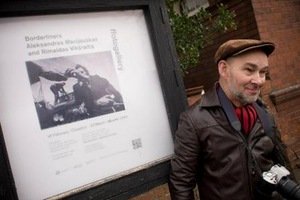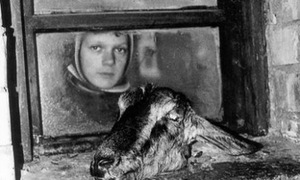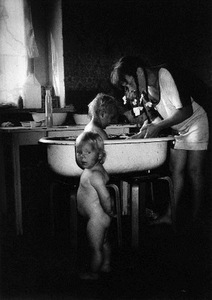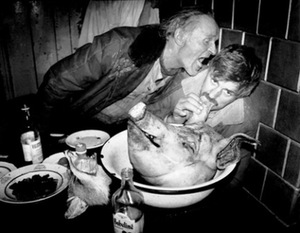PHOTOGRAPHY OF PERIPHERY 5
In brief: The Lithuanian photographer Rimaldas Vikšraitis, who won the award of discovery of the year in Arles photography festival Rencontres d'Arles (“Meetings in Arles”) in 2009, became a renowned artist on the international stage of photography. Works of this author were showcased in London, Beijing, Poznan, Glasgow, Vienna, Madrid and the Hague. Interest in works of the Lithuanian photographer is high until today. R.Vikšraitis and the classic of Lithuanian photography Aleksandras Macijauskas organised the exhibition “Borderliners” at the gallery Ffotogallery in Cardiff, Wales on February 16 – March 23 of this year. R.Vikšraitis displayed his series of photographs “Grimaces of the Weary Village”.
Still, international recognition and attention of art professionals does not solve sensitive issues provoked by momentous works of R.Vikšraitis. Is it ethical to exhibit views of social degradation or unsuccessful personal lives in exhibition halls? How much is the life of R. Vikšraitis’ photographs real? What actual issues does foreign audience see in the works of the Lithuanian artist and why do specialists of photography estimate these photographs?
Back in 2009 R.Vikšraitis was presented in Arles by the well-known British photographer Martin Parr: “One of the things that describes a good photograph is the quality of relation between the photographer and his/her object. From this point of view Rimaldas is really successful. He captures his friends who involve in his creation for the latter 20-25 years. He takes his bike, goes and meets them, drinks and celebrates with them, he is having a good time. This may be seen in photographs. [...] Rimaldas is not shrewd and fashionable, he has a heart, he is real.” Therefore, M. Parr presents several “keywords” that enables one to search for answers to intricate questions related with the works of the Lithuanian author.
The note about the special relation of R.Vikšraitis with the photographed people turns attention to one of the main features of his works – the exceptional position that is not accessible to other photographers of social periphery, which enables him to observe life from the inside.
Also, “exotics” of the social reality that is not experienced by the middle-class society interests photographers and viewers for almost two decades already. Still, according to the American writer Susan Sontag, a photographer who captures the decline of the lowest layers of society or dazzling shine of the rich is often “like a tourist, who visits local people and brings news about their exotic life and strange habits” (Susan Sontag, On Photography, Vilnius: Baltos Lankos, 2000, p. 49.).
Meanwhile, the relation of R.Vikšraitis and the photographed life is different – views captured by him are part of his own reality. This is why doubts about ethics of his works are not persuasive. Photographs of R.Vikšraitis tell about people personally known to him and show the environment that was touched by political and economical changes of the latter decades painfully.
Perhaps it is interesting for viewers of the West to discover the “exotics” of the lowest social layer and the reality of the so-called post-Soviet countries. R.Vikšraitis is in a special position as regards the captured social reality and geopolitical region. The photographer knows and captures life in the periphery of “normal” society and post-Soviet reality “from the inside”. The combination of such experience of the author and sincerity of his work makes his photographs exceptional in the context of Lithuanian and other countries’ photography.












